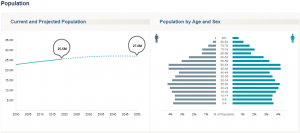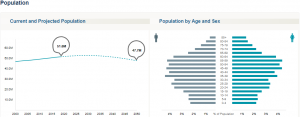Observing the population pyramid graphs of Mozambique and Philippines you can see that they are both countries with a positive trend. Both of their populations are growing, however Mozambique has a more intensive shape as such it’s growth is much higher. Looking at the forcast, Mozambique’s population will double by 2050 while the Philippines will increase by a factor of 1.5. In relation to the structure of these graphs. The Philippines graph has a plumper shape to it, while Mozambique is sharp and clearly suggest rapid population growth. This places Mozambique in stage 1 and Philippines in stage 2.
Mozambique:
Males per 100 Females: 96.9
People per square kilometer: 38.3
Number of children per woman: 5.0
Current Population: 30.1M
Estimated Population 2050: 63.4M
Philippines:
Males per 100 Females: 100.7
People per square kilometer: 366.2
Number of children per woman: 2.9
Current Population: 109.2M
Estimated Population 2050: 155.4M


